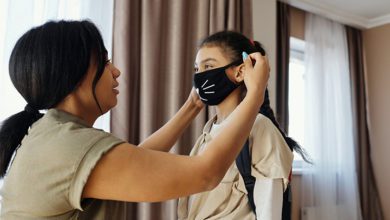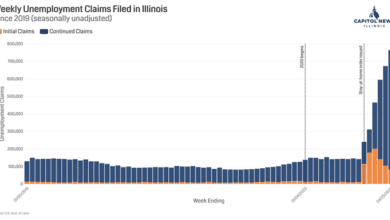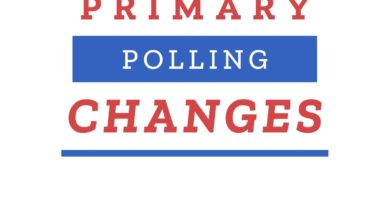Christie Clinic’s Dr. Michael Kuhlenschmidt talks about COVID-19

BY DANI TIETZ
dani@mahometnews.com
A cruise ship quarantined with passengers on board, elevated travel precautions, reports of fatalities and talk of a pandemic have captivated news reports for months, with an escalation in both national and local reports in the weeks since the first case of the coronavirus was confirmed within the United States.
Coronaviruses, a specific family of viruses, known to make up one-third of the upper respiratory infections (or common cold) during cold and flu season, has a novel, or new, strands that can cause more severe disease in humans.
“Essentially this is a new virus, although it is related to other coronaviruses that we have previously identified,” Christie Clinic’s Dr. Michael Kuhlenschmidt said. “Technically speaking, this is a betacoronavirus in the same subgenus as the virus that caused the SARS outbreak in early 2003. This virus does seem to share similarities with the SARS (severe acute respiratory syndrome) virus.
“In fact, it has been suggested that the virus that causes COVID-19 be designated SARS-CoV-2 because of this similarity.”
According to the World Health Organization, SARS was first identified in 2002 in the Guangdong province of southern China. An epidemic of SARS affected 26 countries and resulted in more than 8,000 cases and 774 deaths before it was contained in 2003.
Another novel coronavirus MERS (Middle East respiratory syndrome) was first reported in 2012. The World Health Organization reports that since 2019, 2,494 cases and 858 deaths have been reported.
According to live update work by John Hopkins University, on Jan. 22 there were 77 COVID-19 cases worldwide whereas on March 5, there are 97,771 cases and 3,346 deaths.
Dr. Kuhlenschmidt said that the person-to-person transmission rate suggests that it mimics the way that influenza spreads: respiratory droplets through coughing and sneezing or contact with contaminated surfaces.
Symptoms of COVID-19 resemble those of a cold, but people with a more serious infection present with a significant fever, shortness of breath, and severe cough.
“Pneumonia seems to be the most common severe manifestation of COVID-19,” Dr. Kuhlenschmidt said. “The virus was first identified in Wuhan City, China after investigation into an unusual cluster of cases of severe pneumonia.”
Although the primary source of COVID-19 is still unknown, Dr. Kuhlenschmidt said that it shares a great deal of similarity to certain bat coronaviruses.
“It appears that bats are the primary source, although it is uncertain if there is another intermediate host involved,” he said.
“Since this coronavirus is novel or new to humans, our natural immunity to this virus is lacking.”
Dr. Kuhlenschmidt said that each year the coronavirus, a common virus, may cause up to one-third of the upper respiratory infections (or common cold) during cold and flu season.
“The vast majority of these virus strains are mild and do not cause severe illness,” he said. “For example, the typical coronaviruses are often less severe than influenza, however there have been exceptions.”
Like most coronaviruses and influenza, Dr. Kuhlenschmidt said the “virus seems to cause more severe infection proportional to age with the oldest population being the highest risk.
“It appears that this virus does not cause significant illness in young children less than 10 years old, although it is critical to restate that we still do not know everything about this virus and all people, including children, should take precautions,” he said.
“As with many respiratory viruses including influenza, people with chronic medical conditions, specifically lung disease such as COPD or asthma, chronic heart disease, or diseases that affect the immune system, are at particularly high risk for severe infection from COVID-19.
“Infection in nursing homes is a major concern.”
Dr. Kuhlenschmidt suggests that those presenting with mild symptoms should avoid going to the doctor or emergency room.
“COVID-19 is still rare in the U.S. and it is far more likely that symptoms are due to another seasonal virus including influenza,” he said.
“However, in situations such as travel to an at-risk country within 14 days of the start of symptoms (China, South Korea, Italy, Iran, Japan) or direct exposure to a patient confirmed to have COVID-19, it is important to get tested. In this situation, call your medical provider’s office. They may test you without an appointment in an effort to reduce the spread of the virus. You may also be directed to the Public Health Department.
“Waiting rooms and hospitals are a perfect place to spread the virus to someone else, or have it passed to you. Testing can often be arranged if you meet certain criteria. Your doctor or other healthcare provider can offer guidance.”
Healthcare providers use a nose or throat swab to test for the specific genetic sequence of the coronavirus.
“Virus swabs are available at any clinic, but specific testing is done with help from the Public Health Department/CDC,” he said.
But if symptoms are severe, such as high fever or shortness of breath, especially with the risk factors described previously, seek care in the emergency room.
“These are signs of possible severe infection that may require hospitalization,” Dr. Kuhlenschmidt said. “As medical providers, we are making every effort to keep patients out of the emergency room unless it is likely that a patient may need hospital admission for treatment.”
The rapid spread of COVID-19 and the death-rate is causing pause among healthcare professionals.
“In terms of case fatality rate (or percentage of infected people who die from the infection) this appears to be a deadlier virus that other seasonal viruses including influenza,” Dr. Kuhlenschmidt said. “The case fatality rate of COVID-19 appears to be around 2%, but this is highly dependent on age and other health conditions. This rate of 2% does mirror the SARS epidemic from the early 2000’s, which is not surprising given the similarities.
“For context, the case fatality rate of influenza is significantly less than 1% (probably around 0.1% although certain influenza strains are deadlier). However, it should be noted that the case fatality rate of COVID-19 may actually be lower than initial estimates due to under-reporting of mild disease. Most patients who are tested have severe symptoms which may make the disease appear deadlier than it is.
“There is still much more we need to learn about this virus before drawing any confident conclusions.”
There is one thing that health care professionals are sure of: hand washing is the human’s best tool to prevent the spread of COVID-19.
“This goes back to basics,” Dr. Kuhlenschmidt said. “The most important interventions to prevent the spread of the virus are all things we learned in grade school. Wash your hands frequently, don’t cough on other people, stay home when you are sick, and avoid contact with other people who are sick.
“We don’t have a vaccine available and there is no anti-viral. Prevention is key and can dramatically reduce the spread of this virus.”
He also said facemasks probably won’t work, but they likely don’t hurt, either.
“Facemasks might help prevent transmitting the virus to someone else if you are sick and wear one,” Dr. Kuhlenschmidt said.
He, like others, is hopeful that like influenza and the common cold, cases of COVID-19 will subside with warmer weather.
“This is still unclear though and I would say that it is too early to tell. From what we know of this virus currently, it can reasonably be expected to be seasonal,” he said.
Regardless, Dr. Kuhlenschmidt said that COVID-19 is a significant public health threat that should be respected.
“However, as we all know, disinformation and rumor cause a great deal of panic and harm. It is important to follow valid sources for updates such as the CDC.
“Again, in ideal circumstances, if we were to experience an outbreak here locally, having the flexibility to stay home and avoid public places would help.
“Common sense preparations including stocking up on basics would be reasonable. However, it is far too early to tell what impact from this virus we will see here in the U.S. There are more cases reported daily, but at this point, it is still rare in the U.S.”
Rural Champaign County Schools
Local school districts are monitoring the spread of COVID-19 closely, with a steady stream of emails to parents to help them understand how the coronavirus might impact the student population.
St. Joseph-Ogden’s superintendent Brian Brooks said that the district will continue to take the same precautions that it does to contain the spread of influenza, colds, stomach viruses, and other sicknesses.
“We clean and sanitize our building/classrooms daily,” Brooks said. “We have also sanitized our buses more than once already as well.”
Heritage’s Superintendent Tom Davis said Influenza A or B have not impacted student attendance in the district this winter.
“We had one small spike of absences back in January but that was about it,” Davis said. “We are staying aware of what’s in the media and also Illinois in particular.”
Superintendents in St. Joseph, St. Joseph-Ogden, Heritage, Mahomet-Seymour, Prairieview-Ogden and Oakwood school districts are following guidance provided by the Centers for Disease Control, the Illinois Department of Public Health, and the Champaign-Urbana Public Health Department:
Some of the recommendations that have been given to all schools are:
- Wash hands often with soap and water for at least 20 seconds. If soap and water are not available, then use an alcohol-based hand sanitizer.
- Avoid touching eyes, nose, and mouth with unwashed hands.
- Avoid close contact with people who are sick.
- Stay home when you are sick. This is very important not only for the Coronavirus, but we are also seeing influenza and stomach virus cases with students and staff.
- Cover your cough or sneeze with a tissue then throw the tissue in the trash. Do not cover your mouth/nose with your hands when coughing or sneezing.
- Clean and disinfect frequently touched objects and surfaces.
Brooks included that there is zero reason at this time to consider cancelling school due to the coronavirus.




